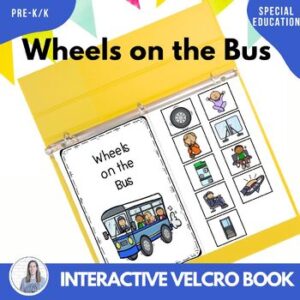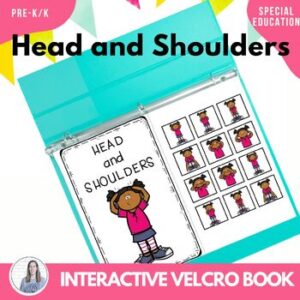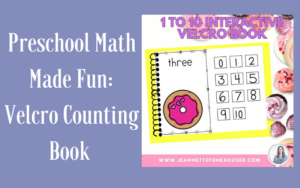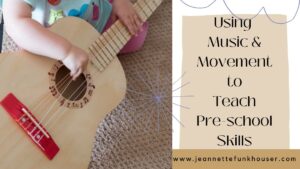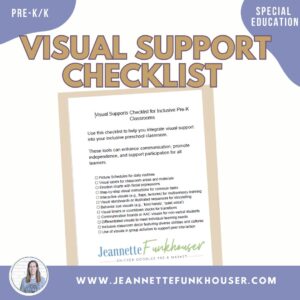As preschool educators, we understand the vital role that early childhood experiences play in shaping a child’s future learning journey. The transition to kindergarten can be both exciting and daunting for young learners. One of the most effective, engaging, and enjoyable ways to prepare children for this transition is through the integration of music and movement into the preschool curriculum. These activities promote creativity and joy while supporting key developmental milestones essential for kindergarten readiness. Here’s an in-depth look at how to effectively incorporate music and movement into your preschool classroom to enhance various kindergarten readiness skills.
1. Language Development
Songs and Rhymes: Language development is a cornerstone of kindergarten readiness. Singing songs and reciting nursery rhymes can significantly enhance phonemic awareness and vocabulary. Choose songs that feature repetitive phrases and rhymes to encourage children to anticipate what comes next. For instance, classics like “The Wheels on the Bus” or “Five Little Monkeys” delight children and encourage active participation, reinforcing language skills.
Movement with Lyrics: Encourage children to act out the lyrics of songs. This can be as simple as clapping hands to the rhythm or performing specific movements aligned with the lyrics. For example, during “If You’re Happy and You Know It,” children can clap, stomp, and jump, reinforcing physical coordination and comprehension of the lyrics. This kinesthetic approach makes learning language more tangible and memorable.
Story Songs: Incorporate storytelling through songs that have a narrative. Using songs like “The Lion Sleeps Tonight” allows you to introduce new vocabulary and concepts while encouraging children to visualize the story. After singing, discuss the narrative with the children, prompting them to summarize the story in their own words.
2. Social-Emotional Skills
Group Dances: Engaging in group dances fosters cooperation and sharing among children. Activities such as circle dances, conga lines, or partner dances encourage children to interact positively with their peers. As they learn to move together, they develop essential social skills, including taking turns, communicating, and understanding body language.
Expressive Movement: Use music to allow children to express their emotions through movement. Play various genres of music—classical, jazz, pop, or even nature sounds—and invite children to dance in ways that reflect how the music makes them feel. This practice helps them recognize and articulate their emotions, an important aspect of social-emotional readiness for kindergarten.
Emotion Charades: Create a game where children listen to music and act out different emotions—happy, sad, angry, surprised—through dance or movement. This activity not only helps children understand emotions but also promotes empathy as they observe their classmates express feelings in various ways.
3. Motor Skills Development
Fine and Gross Motor Skills: Incorporating musical instruments like shakers, tambourines, and drums enhances fine motor skills as children grasp, shake, and tap. These activities refine hand-eye coordination and dexterity, which are crucial for early writing skills. Movement activities, such as dancing, jumping, or balancing on one foot, promote gross motor skills essential for physical readiness in kindergarten.
Action Songs: Songs that involve actions, such as “Head, Shoulders, Knees, and Toes,” are excellent for teaching body awareness and coordination. Children learn to identify different body parts while simultaneously developing physical skills. You can also create your own action songs tailored to the children’s interests and experiences, making the learning process even more relevant.
Obstacle Courses: Set up a simple obstacle course that incorporates music. Play upbeat music as children navigate through tunnels, hop on one foot, or crawl under tables. This activity builds gross motor skills and encourages children to listen and follow the rhythm of the music, enhancing their coordination.
4. Cognitive Skills
Rhythm and Patterns: Engaging children in rhythm activities helps them recognize patterns, foundational for math skills. Use clapping games or drumming to introduce concepts of counting, sequencing, and rhythm. For instance, clapping a rhythm and having children repeat it builds listening skills and cognitive processing.
Musical Games: Play interactive games like “Freeze Dance” or “Musical Chairs” to enhance listening skills and the ability to follow directions. These games also promote critical thinking as children learn to anticipate what will happen next. After playing, engage children in a discussion about their experiences, prompting them to reflect on the rules of the game and how they felt during the activity.
Musical Storytelling: Combine music and storytelling by creating musical stories where children participate in sound effects or character voices. This approach boosts comprehension and encourages creativity as children come up with their own interpretations of the story.
5. Creativity and Imagination
Imaginative Play: Encourage children to create their own dances or songs. This fosters creativity and self-expression, allowing them to explore their ideas and feelings. Offer prompts such as “What kind of dance would a butterfly do?” or “Can you make up a song about your favorite animal?” This kind of imaginative play helps children build confidence in their abilities.
Musical Art: Combine music with visual arts by encouraging children to paint or draw while listening to different types of music. Ask them how the music makes them feel and how they can express that feeling through their artwork. This activity integrates sensory experiences and fosters an appreciation for the arts.
Story Dancing: Create a story through dance. Narrate a simple story and let children act it out through movement. For instance, a tale about animals in the jungle can inspire children to crawl like a tiger, leap like a monkey, or sway like a tree. This activity merges creativity with physical activity, offering a holistic learning experience.
Tips for Successful Integration
Be Inclusive: Ensure all children can participate by adapting activities to accommodate different abilities. For example, use visual aids, simplified instructions, or alternative instruments for children with motor challenges.
Variety is Key: Rotate songs, instruments, and movement activities regularly to keep children engaged and curious.
Incorporate Cultural Diversity: Include music and dances from various cultures to broaden children’s horizons and promote inclusivity.
Create a Routine: Establish regular music and movement sessions to provide a sense of structure and predictability for the children.
Encourage Family Involvement: Share songs and activities with parents to reinforce learning at home. Invite families to participate in music days or performances to foster community connections.
Integrating music and movement into the preschool classroom not only prepares children for the transition to kindergarten but also creates a joyful and stimulating learning environment. Through purposeful activities that target language development, social-emotional growth, motor skills, cognitive abilities, and creativity, educators can help children build a strong foundation for future success. By embracing the power of music and movement, we can ensure that every child enters kindergarten ready to thrive.


